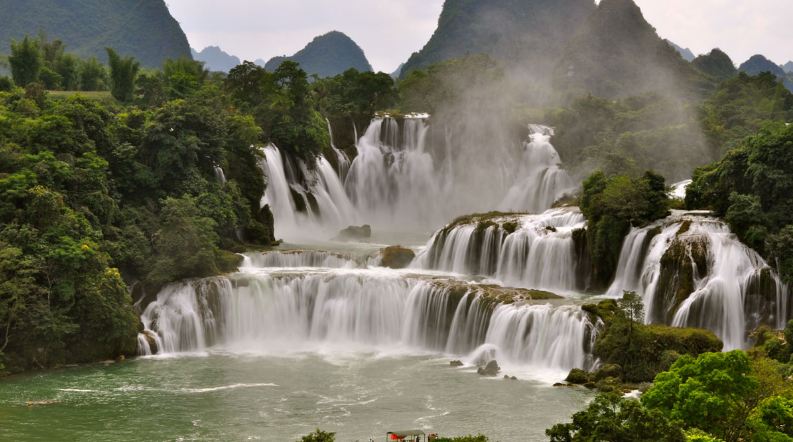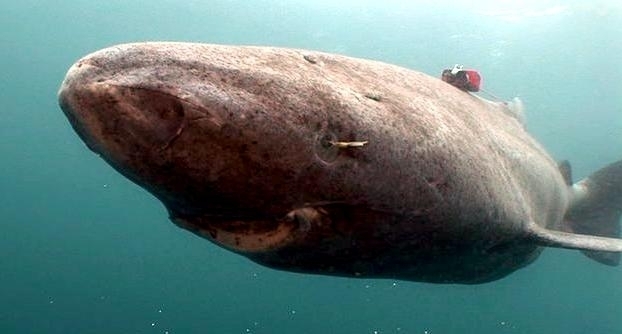Top 10 Largest Spiders In The World 2025
Ever wondered what lurks in the shadowy corners of our planet, spinning webs of mystery and intrigue? Welcome to the world of the top 10 world’s largest spider species in 2025! These arachnids aren’t your average house pests—they’re massive, huge, and downright colossal. Picture this: legs stretching out like eerie fingers, bodies built for hunting, and a presence that screams giant. We’re diving into the rankings of the biggest spiders in the world, based on sizes ever recorded.
From oversized tarantulas to speedy hunters, this list showcases nature’s most enormous arachnid varieties. Why do these creepy crawlers grow so large? It’s all about survival—bigger dimensions mean more power to tackle prey like insects, rodents, or even birds. So, grab your courage, and let’s explore the habitats, records, and jaw-dropping facts about these eight-legged wonders. Ready for a wild ride?
The Creepy Crawly Giants Of Earth
1. Giant Huntsman Spider: The Leggy Legend
Imagine a spider that could cover your dinner plate with its leg span—meet the Giant Huntsman Spider, Heteropoda maxima. Clocking in at a massive 30 centimeters (12 inches), it’s the largest by leg length globally. Found in the steamy caves of Laos, Southeast Asia, this arachnid thrives in a habitat that’s dark and damp, perfect for its speed and agility.
Also Read: Top 10 Most Beautiful Spiders In The World
Discovered in 2001 by Peter Jäger, its pale, crab-like body darts around at lightning pace, chasing down bugs with stealth. Unlike the web-spinning orb weaver, it’s a pure hunter—no silk traps here, just raw force. Weighing less than its hefty cousins, its anatomy is all about those sprawling lengths of legs. How big can it get? Big enough to make you jump! With its quickness and eerie appearance, it’s a living myth straight out of a spooky tale.
2. Goliath Bird-eating Tarantula: The Heavyweight Champ
Next up, the Goliath Bird-eating Tarantula, Theraphosa blondi, reigns as the heaviest spider on earth. Tipping the scales at 175 grams with an 11-inch span, this tarantula calls the rainforests of South America—think Venezuela and Brazil—its territory. Its environment is a swampy, nocturnal jungle, where it hides in burrows lined with silk.
Also Read: Top 10 Rarest Snakes In The World
First spotted in 1804, this beast’s weight and measurements are mind-blowing—its fangs alone are an inch long! Despite the name, birds aren’t its main food; it prefers worms, lizards, and mice, using venom to subdue them. What’s its secret? A structure built for ambush, with bristly hairs that it flicks at predators for defense. This colossal critter’s behavior is shy, not savage, but its bite packs a sting. A true record-breaker, it’s the stuff of legends in spider lore.
3. Brazilian Salmon Pink Birdeater: The Pet with Pizzazz
Say hello to the Brazilian Salmon Pink Birdeater, Lasiodora parahybana, a huge fan favorite among pets. Stretching up to 11 inches with a weight around 100 grams, this species hails from Brazil’s lush forests. Its ecosystem is warm and humid, ideal for its vibrant pinkish markings that scream personality. Known for its durability, it’s less aggressive than you’d think—perfect for keepers bold enough to handle it.
Also Read: Strongest Animals In The World
Females boast a lifespan of 15 years, outliving males who tap out at 5. Its diet leans toward insects and small critters, nabbed with a bite that’s more bark than poison. No web here—just a burrow-dweller with a calm nature. Found in the wild and pet shops alike, its popularity soars in the trade. Ever seen one? Its colors and traits make it a standout in any gallery.
4. Brazilian Giant Tawny Red Tarantula: The Gentle Giant
Meet the Brazilian Giant Tawny Red Tarantula, Grammostola anthracina, a massive beauty with a 10-inch span and 80 grams of bulk. Roaming Uruguay, Brazil, and Argentina’s scrublands, its range is vast and wild. This tarantula’s climate is dry and open, a stark contrast to rainforest dwellers. With a longevity pushing 20 years, it’s a survivor, sporting a glossy reddish-brown look. It’s docile, making it a hit in the market for exotic companions.
No fancy webs—just a burrow life with a diet of bugs and small meals. Its strength lies in patience, waiting out prey with quiet instincts. Discovered long ago, it’s a staple in research for its easygoing habits. What’s the draw? A body that’s tough yet approachable, blending resilience with a chill vibe—perfect for any spider fan’s collection.
5. Colombian Giant Redleg Tarantula: The Flashy Feaster
Halfway through our ten, the Colombian Giant Redleg Tarantula, Megaphobema robustum, dazzles with an 8.5-inch span and 70 grams of heft. Native to Colombia and Brazil’s tropics, its habitat is a steamy rainforest bursting with life. Those striking red legs aren’t just for show—they signal a spider that’s less about danger and more about munching on insects and mice.
Its features include a hairy structure that’s pure eye-candy, with a feeding style that’s steady, not frantic. Scientists love its patterns, studying how it blends into its terrain. No web spinner here—it’s all about ground-level pursuit. Recorded in dense jungles, its population thrives despite threats. Got a phobia? This one’s more bark than bite, with venom that’s mild to humans. A rare gem in the spider hierarchy!
6. Chaco Golden-knee Tarantula: The Golden Wonder
The Chaco Golden-knee Tarantula, Grammostola pulchripes, struts an 8-inch span with golden knee markings that pop against its dark body. Hailing from Paraguay and Argentina’s grasslands, its geography is wide-open and sunny. This tarantula’s personality is calm, a trait that makes it a special pick for domestication.
Females can hit 20 years, while males linger around 7—talk about survival! Its prey? Small bugs nabbed with power and precision, no silk net needed. Studies highlight its toughness, thriving in a savanna system. Found in burrows, it’s a master of camouflage, blending with the earth. How does it compare? Its proportions are modest but mighty, earning it a spot in museums and pet tanks. A unique mix of beauty and brawn, it’s a spider with serious style.
7. Face-Sized Tarantula: The Creepy Climber
Ever heard of a spider as big as your face? The Face-Sized Tarantula, Poecilotheria rajaei, spans 8 inches and calls Sri Lanka and India home. Its habitat? Tree-filled forests where it spins strong threads for shelter, not traps. Discovered in 2009, this hairy beast’s venom packs a potent punch for rodents and lizards—its go-to meals.
Researchers note its designs, with yellow and gray colors that scream stealth. What’s its deal? A life cycle tied to the woods, where it climbs with movement that’s eerily smooth. Rare in the wild due to deforestation, its numbers are a concern for conservation. No web for hunting—just pure force and cunning. This tarantula’s impact is huge, a living metaphor for nature’s wild side. Images of it? Pure nightmare fuel!
8. King Baboon Spider: The African Royalty
The King Baboon Spider, Ceratogyrus darlingi, rules East Africa’s shrublands with an 8-inch span. Its environment is dry and rugged, a perfect niche for this burrowing tarantula. Known for its aggressive actions, it tackles lizards and chicks with fangs that mean business. Found in the wild, its rusty appearance mimics a baboon’s fingers—hence the name.
Females enjoy a 20-year age, a testament to its resilience. No webs here—just a trap of dirt and silk. Science digs its vibrations, a defense trick that spooks foes. How does it rank? Its measurements and weights land it firmly in the top ten. A specialist’s delight, its density in the wild makes it a sighting worth chasing. This spider’s legacy? Pure, untamed power in a compact package.
9. Hercules Baboon Spider: The Lost Legend
The Hercules Baboon Spider, Hysterocrates hercules, is a mystery with an 8-inch span. Once roaming Nigeria’s depths, it’s possibly extinct—a single specimen sits in London’s museums. Its history dates back over a century, a fossil-like relic of prehistoric vibes. Weighing in as a chunky tarantula, its diet likely included bugs and small critters, nabbed with forceful instincts.
What was its habitat? Dense rainforest, now fading fast. Experts guess its traits from that lone record, hinting at a robust structure. No web—just a burrow life with armor against enemies. Its rarity fuels folklore, a tale of a lost giant. How big was it really? Big enough to spark awe. A past marvel, it’s a ghostly echo in spider evolution.
10. Brazilian Wandering Spider: The Venomous Vagrant
Rounding out our list, the Brazilian Wandering Spider, Phoneutria fera, stretches 18 centimeters with a 5-inch body. South America’s jungle floors are its zones, where it roams free—no burrows or webs, just pure motion. Discovered as a threat, its bite delivers toxicity that’s downright scary, making it the most dangerous on this roster.
Its food? Anything from bugs to birds, hunted with agility and senses on high alert. Scientists study its potency, eyeing medical breakthroughs. Found in banana crates, it’s earned the nickname “banana spider”—a hazard in commerce. What’s its vibe? Restless habits and a nocturnal streak. Population thrives in the wild, a risk to unwary travelers. This spider’s significance? A force of nature that demands respect.
Why Do Spiders Get So Big?
So, how do these spiders grow to such colossal sizes? It’s all about biology and ecology. In lush ecosystems like rainforests or caves, food is plentiful—think juicy prey that fuels growth. Adaptation plays a role too; bigger legs and bodies mean better hunting or protection. Evolution over millennia has sculpted these breeds, from ancient roots to modern marvels.
Australia and Florida host smaller kin, but the tropics breed the real giants. What’s the limit? Science says oxygen levels and climate shape their proportions. Fossil remains hint at even bigger ancestors, but today’s records crown our ten. Research digs into their physiology, revealing strength and durability. These arachnids aren’t just big—they’re built to survive, a testament to nature’s wild balance.
Habitats: Where Giants Roam
These spiders don’t just pop up anywhere—their habitats are as varied as their forms. Jungle giants like the Goliath thrive in wetlands and swamps, while the Giant Huntsman prefers underground tunnels. The Brazilian Wandering Spider roams savanna floors, and the Chaco Golden-knee digs into plains. Mountains and deserts? Less likely—most favor forests or grasslands.
Coastal islands host rarities like the Face-Sized Tarantula, blending into trees. Weather matters too—humid conditions boost growth, while arid terrains limit it. Migration? Rare, but they shift with food. Geography paints their distribution, from urban edges to rural wilds. How do they pick spots? Instincts guide them to hollows or depths where prey abounds. Their locations? A global spread of creepy corners!
Feeding Frenzy: What’s on the Menu?
What do these giants eat? Their diet is a horror show of meals. The Goliath slurps worms and lizards, while the Brazilian Wandering Spider chases birds. Most stick to insects, but bigger prey like mice or frogs isn’t off the table. Hunting styles vary—no orb weavers here; they’re hunters or ambushers. The Giant Huntsman uses speed, the King Baboon raw power.
Venom or force downs their catch, followed by a sloppy feeding fest. How much? Enough to pack on weight—the Goliath’s 175 grams don’t come cheap! Predators like snakes flip the script, but these spiders hold their own with resistance. Science tracks their habits, revealing a balance of terror and necessity. Their role? Keeping populations in check, one bite at a time.
The Bite Factor: Venom and Safety
Let’s talk bite—are these spiders a risk? The Brazilian Wandering Spider’s venom is a hazard, potentially lethal without care. The Goliath? More sting than death, like a wasp’s jab. Most, like the Chaco Golden-knee, wield mild poison—painful but not fatal. Toxicity varies, but safety is key; they bite only when cornered. How bad? Depends on the species—experts say antivenom handles the worst.
Fear fuels phobia, yet stats show rare human encounters. Defense is their game—hairs, hisses, or vibrations ward off threats. Research unpacks their potency, calming panic with facts. What’s the takeaway? Respect, not dread—most prefer to hide than fight. Their significance? A reminder of nature’s wild dangers, tempered by reality.
Reproduction and Longevity: Life Cycles
How long do these giants live? Lifespan varies wildly—females like the Brazilian Tawny Red hit 20 years, while males often fade post-mating. Reproduction kicks off with courtship, laying eggs in silky sacs. Young hatch in weeks, tiny but fierce. The Face-Sized Tarantula’s offspring climb trees, while Goliath babies burrow fast.
Breeding boosts numbers, though density differs—some thrive, others teeter on endangerment. Science tracks their cycle, from eggs to adults, revealing survival tricks. How many? Hundreds per clutch, but few reach age. Studies highlight longevity, a feat of resilience. What’s the catch? Males sacrifice for the next generation, a brutal balance. Their life? A duration of instinct and growth, shaping their legacy in the wild.
Conservation Challenges: Giants at Risk
Are these spiders safe? Conservation says no—habitat loss hits hard. The Face-Sized Tarantula’s forests shrink, the Hercules Baboon’s range vanishes. Endangerment looms with challenges like logging and urban sprawl. Efforts fight back—preservation in parks or zoos helps. Scientists sound the alarm, tracking vulnerability with data.
How bad? Some, like the Brazilian Wandering Spider, hold steady; others teeter on extinction. News buzzes with updates, urging care. What’s at stake? A system where spiders balance prey populations. Books and documentaries spotlight their plight, pushing for action. Tourism—think attractions like spider exhibits—spreads awareness. Their status? A call to protect these giants, ensuring they don’t fade into history.
Culture and Creepy Tales
Spiders weave into culture—think myths of cunning weavers. The Goliath stars in South American tales, a symbol of raw power. Fiction paints them as terrors—novels and games amp up the dread. Art captures their designs, from sketches to imagery. How do we see them? A metaphor for fear or smarts, depending on the story. Folklore whispers of ancient encounters, blending fact with fantasy. Entertainment thrives on their anxiety—think spider-filled play. Science meets art in museums, where displays awe visitors. What’s the vibe? A mix of terror and respect, fueling activities like spider hunts. Their meaning? A representation of nature’s wild wit, etched in literature and beyond.
The Future of Spider Giants
What’s next for these giants? Future discoveries loom on the horizon—new species could shake the rankings. Modern tech, like videos and clips, tracks their movements, revealing secrets. Research pushes boundaries, from physiology to ecology. How will they fare? Adaptation to change—think city edges or wild shifts—keeps them ticking. Scientists predict growth or decline, eyeing climate patterns. Rare finds in caves or islands spark hope. What about now? 2025 crowns these ten, but tomorrow could shift the scale. Global eyes watch, from jungles to plains, for the next big spider. Their legacy? A worldwide saga of awe, teetering between past glories and upcoming thrills.
Conclusion: Spinning the Final Thread
So, there you have it—the top 10 world’s largest spiders of 2025, a wild crew of giant arachnids that’ll haunt your dreams or spark your curiosity. From the Giant Huntsman’s freaky legs to the Goliath’s jaw-dropping bulk, these species prove nature’s got a knack for the big stuff. Their habitats—sprawling jungles, creepy caves, wide-open grasslands—paint a world of eight-legged wonders.
Science keeps peeling back their secrets, from hunting tricks to mating dances, while culture spins wild tales that stick. How do they measure up? A matchup of weights, lengths, and sheer traits crowns them champs. So, what’s the big deal? These spiders are planetary rockstars, blending fear with pure fascination. Dig into their stats, flip through some shots, or lose yourself in their stories—these creepy crawlers weave a web of awe that’s tough to shake!




